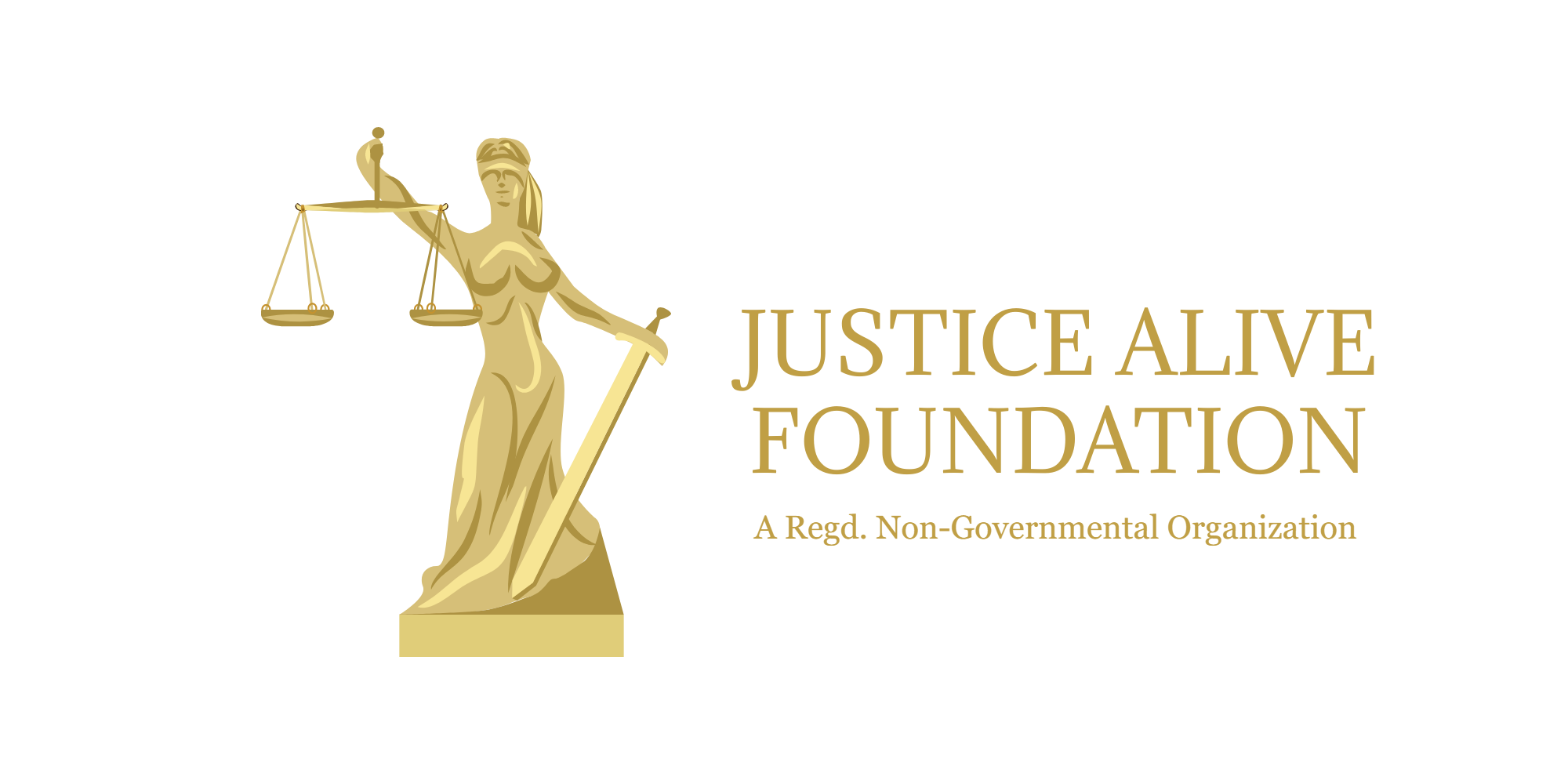
Legal Aid for Victims of Domestic Violence
This article has been written by Ms. Abhiruchi Kumari.
INTRODUCTION
Several million people all around the world are impacted by the serious social problem of domestic violence. According to the Domestic Violence Act 2005, it includes a variety of abusive actions, such as sexual, emotional, physical, and financial abuse. Domestic abuse victims frequently struggle with a variety of issues, including fear, loneliness, and a lack of resources to leave violent relationships. Legal aid programs have become an essential tool for helping victims receive support and justice in response to these issues.
Domestic abuse can take many different forms, including physical, emotional, sexual, and financial abuse. This serious socioeconomic issue affects millions of individuals worldwide. Fear, loneliness, and a lack of resources to leave abusive situations are just a few of the difficulties that victims of domestic abuse frequently experience. Legal aid programs have become essential tools for giving these people help and justice. This research paper examines the idea of legal aid for victims of domestic violence, concentrating on the difficulties legal aid organizations experience in delivering efficient help and outlining creative strategies and viable remedies to get over these difficulties.
Domestic abuse victims frequently struggle with a variety of issues, including anxiety, isolation, and a lack of resources to leave abusive relationships. Legal aid programs have become essential tools in helping victims receive support and justice in response to these difficulties. The goal of this research paper is to analyze the idea of legal aid for victims of domestic violence by identifying the difficulties that legal aid organizations confront and looking at creative strategies and potential answers to these problems. We can improve legal aid services and guarantee that victims of domestic violence receive the support and help they need to end the cycle of abuse by recognizing the impediments and looking into practical strategies.
LEGAL AID FOR DOMESTIC VIOLENCE VICTIMS
People of all genders, colors, and socioeconomic levels are affected by the prevalent problem of domestic violence. Physical, emotional, sexual, and financial abuse are all included in this category of abusive behaviors. In order to defend themselves and leave violent situations, victims of domestic abuse frequently encounter a number of difficulties while seeking legal assistance.
Legal aid is essential for ensuring that those who cannot afford legal representation have access to justice. Legal aid strives to offer survivors of domestic violence full legal assistance. This assistance includes knowledge, counsel, advocacy, and representation throughout court cases involving restraining orders, divorce, child custody, and charges against the abuser. Legal aid programs assist victims in navigating the complex legal system and defending their rights by providing these services.
Despite the significance of legal aid, victims of domestic abuse face several obstacles in their attempts to use these services. To make sure that victims receive the assistance they require, it is essential to recognize and overcome these hurdles. The following obstacles frequently confront victims of domestic violence:
1. Financial Restrictions:
Many survivors may not have the funds to retain private counsel or use legal services. This barrier is made worse by economic abuse, in which the abuser has financial power over the victim. Legal aid programs, which offer free or inexpensive legal assistance, are essential in bridging this gap.
2. Fear and Harassment:
Victims of domestic abuse frequently feel frightened and mistreated by their abusers, which may discourage them from obtaining legal assistance. It is crucial to address the survivors’ safety concerns and to offer safe spaces for representation and conversation.
3. Language and cultural obstacles:
Language and cultural obstacles can make it difficult for victims from various backgrounds, especially immigrants, to obtain legal assistance. Challenges may also come from cultural aspects and a lack of trust in the judicial system. Legal assistance programs should make an effort to offer bilingual information and services that are sensitive to cultural differences.
4. Lack of Knowledge and Awareness:
Survivors might not be aware that legal assistance programs are offered or even exist. They might not know their legal rights or how to use the proper services. The general public must be made more aware of and informed about available legal aid choices.
5. Insufficient Services:
In some areas, there may be a dearth of legal aid organizations or a lack of funding devoted to instances of domestic abuse. The inability to deliver prompt and thorough aid to all survivors in need is hampered by this lack.
Pro Bono Legal Assistance
Now, talking about Pro Bono Legal Assistance, it is where attorneys provide their services free of charge. It plays a crucial role in addressing the barriers faced by domestic violence victims. The following are some ways that pro bono services can improve access to justice and give survivors more power:
- Pro bono lawyers frequently focus on domestic abuse cases, bringing a wealth of knowledge and experience to their defense. This knowledge is crucial for navigating tricky legal situations and effectively defending the rights of survivors.
- Pro bono lawyers increase the number of legal aid organizations that are available, which helps to satisfy the enormous demand for services. Their assistance guarantees that more survivors will have access to the legal counsel they require.
- Pro bono lawyers provide victims a voice and support them throughout the legal process, empowering them. To ensure that their interests are safeguarded, they work closely with clients to comprehend their particular demands and priorities.
- To increase their influence, legal aid organizations frequently work with pro bono lawyers and law firms. The resources and experience of both legal aid programs and pro bono practitioners are combined in these collaborations to provide a coordinated approach to handling domestic abuse cases.
Increasing the effective of Legal Aid Programmes for DV Victims
The following techniques can be taken to increase the effectiveness of legal aid programs and pro bono activities in assisting victims of domestic violence:
1. Training and education:
To help legal aid attorneys and pro bono practitioners better grasp domestic abuse dynamics, trauma-based techniques, and cultural awareness, ongoing training programs should be made available to them. This training guarantees that survivors obtain sympathetic and efficient legal guidance.
2. Interaction and Networking:
To develop a thorough support system for survivors, legal aid organizations should aggressively collaborate with community-based organizations, shelters, healthcare providers, and law enforcement authorities. This network can help victims in many different ways, including by sharing information and facilitating referrals.
3. Financing and Resources:
Legal assistance programs should get adequate financing and resources from organizations, governments, and charitable foundations. This includes funding for pro bono projects, lawyer training courses, and infrastructure that makes it easier to administer legal aid services.
4. Innovation and technology:
Using technology to increase access to legal aid services. Particularly in regions with limited physical access to legal aid facilities, online platforms might be created to provide information, tools, and virtual consultations. Technology also makes it possible for remote representation, which lowers barriers caused by geographic distance.
5. Legislation
Governments should pass and enforce legislation that upholds the rights of victims of domestic violence and expands their access to legal representation. Laws that address financial abuse, enhance the execution of restraining orders, and give survivors’ safety top priority in family court hearings are all examples of this.
By addressing the obstacles to justice that victims of domestic violence experience, legal aid programs, and pro bono initiatives play a crucial role in assisting them. These programs enable people to escape abusive situations, defend their rights, and start over by offering extensive legal support. To guarantee that all victims of domestic violence have access to the support they need to thrive, it is imperative to keep arguing for more financing, cooperation, and innovation in the field of legal aid. Together, we can build a culture in which victims of abuse are respected, given agency, and released from the cycle of violence.
BENEFITS AND IMPACT OF LEGAL AID
Domestic violence is a worldwide problem that has an impact on both individuals and families. The pursuit of justice and safety from their abusers present a number of difficulties for victims of domestic violence frequently. Legal assistance is essential for ensuring that these victims have access to justice.
Access to Justice:
Regardless of their financial situation, legal aid programs give domestic abuse victims access to legal counsel and representation. Legal aid ensures that victims have an equitable opportunity to pursue legal remedies and negotiate the complex legal system by providing free or reasonably priced legal assistance. Access to justice is necessary to obtain custody agreements, restraining orders, and protection orders that protect the victims and their children from future damage.
Legal assistance for victims of domestic abuse also encourages societal change by challenging accepted beliefs about abuse. It supports the notion that domestic abuse is a violation of human rights rather than a private problem. By offering free legal counsel, we demonstrate that society supports survivors in their fight for justice and their right to be free from violence. By encouraging a broader cultural change away from tolerance for domestic violence, stronger relationships can be fostered, and an environment where abuse is decried rather than excused can be established.
The complicated problem of domestic violence cannot be solved by legal help alone, it is necessary to recognize this. To guarantee survivors’ holistic healing and long-term well-being, it should be supplemented by thorough support services, including counseling, safe shelters, and educational initiatives. A coordinated and efficient response to domestic abuse requires cooperation between legal experts, social workers, and community organizations.
Protection and Safety:
Legal assistance assists domestic violence victims in obtaining protection orders, which are essential in preserving their safety and averting further abuse. To make the setting safer, these orders may contain clauses that forbid the abuser from speaking to or approaching the victim. Pro-bono advocates regularly collaborate with victims to comprehend their unique situations and create specialized legal plans that will maximize their safety and well-being.
Legal aid gives domestic violence victims the knowledge and tools they need to stand up for their rights, which results in their empowerment. Legal assistance organizations advise victims about their legal options, tell them of their options, and notify them of their legal rights. Victims have the ability to make wise decisions and take charge of their lives by being aware of their legal rights and options for restitution. This empowerment encourages a sense of autonomy and self-worth, which aids in the healing process.
Legal assistance can greatly help to stop the cycle of violence by giving victims the means to leave violent relationships. Legal assistance enables survivors to extricate themselves and their kids from dangerous situations by assisting victims in obtaining protection orders and other legal remedies like divorce or separation. Increased safety, better mental health, and the chance to reconstruct one’s life are all benefits of leaving an abusive relationship.
Holistic Support:
Legal aid organizations frequently go beyond simple legal counsel to include all-encompassing assistance for victims. This could involve linking survivors with neighborhood resources, directing them to counseling programs, and providing help with housing and employment. Legal aid programs provide victims with comprehensive care that helps with their rehabilitation and long-term stability by attending to all of their needs.
Increasing Awareness and Influencing Policy:
Legal aid organizations are essential in promoting domestic violence awareness and influencing policy. They that deal closely with victims get to see firsthand the survivors’ difficulties and are better able to draw attention to any gaps in the law and existing support networks. They shape policies that improve protection for victims of domestic violence through their advocacy work, resulting in systemic changes that are advantageous to society as a whole.
Legal assistance for victims of domestic violence is an essential tool with many advantages and a significant impact. It supports survivors on their road to recovery by ensuring access to justice, maintaining safety and protection, encouraging empowerment, and severing the cycle of violence. Legal aid organizations also help to build a society that is more just and compassionate by providing comprehensive support and advocacy. Recognizing the significance of ongoing funding and support for legal aid programs is essential to ensuring that victims of domestic abuse get the help they need to rebuild their lives and escape the cycle of abuse.
CHALLENGES
In order to help victims of domestic violence, legal aid organizations are essential. But in order to effectively help those in need, these organizations must overcome many obstacles. Some of the Challenges that legal aid organizations face are:
1. Resources:
Legal aid organizations frequently struggle with a lack of funding, which limits their capacity to offer thorough assistance. These organizations might not have the resources to employ skilled personnel, maintain physical offices, and provide essential guidance and assistance.
2. High demand and limited capacity:
There is a significant need for legal assistance in domestic violence situations, but many organizations are unable to fill the gap because of capacity issues. When there are too many victims requesting assistance, the resources are stretched thin and it takes longer to get legal assistance and counsel.
3. Lack of specialized knowledge:
To successfully negotiate the complex legal environment, domestic abuse situations require specialized knowledge and abilities. However, many legal aid organizations struggle to give victims complete support due to a lack of knowledge and training in this area.
4. Geographical obstacles:
Access to legal aid can be difficult, especially for people living in isolated or rural locations. Transportation problems and a lack of legal aid offices may make it difficult for victims to get the assistance they need.
5. Language and cultural obstacles:
People from a variety of linguistic and cultural backgrounds are impacted by domestic abuse. The varied demands of victims from various ethnic and linguistic groupings are frequently difficult for legal aid organizations to serve. Effective communication and understanding between the victim and legal aid providers might be hampered by linguistic and cultural difficulties.
Strategies and potential remedies
1. Solutions enabled by technology:
Legal aid organizations can use technology to broaden their reach and get around geographical restrictions. In order to ensure that victims in remote places can receive assistance, virtual legal clinics and online platforms can offer remote access to legal aid services. Furthermore, options like language translation services and culturally aware web resources can aid in bridging linguistic and cultural divides.
2. Collaborations and interactions
Collaborations are possible between legal aid organizations and community-based groups, law firms, and academic institutions. They enable a more thorough and well-coordinated response to domestic violence incidents by pooling resources, knowledge, and networks. They can also promote education and knowledge exchange, guaranteeing that providers of legal assistance have access to specialized knowledge.
3. Developing skills and providing training
Developing skills and providing training for legal aid professionals is essential if they are to have the abilities and information required to manage domestic violence situations. Understanding the dynamics of domestic abuse, trauma-informed techniques, cultural sensitivity, and domestic violence-specific legal strategies should be the main topics of the training. As legislation and best practices change, continuing professional development programs can help legal aid providers keep informed.
4. Strategic outreach and education:
To inform potential victims of domestic violence about the resources that are available to them and their legal rights, legal aid organizations might take proactive outreach measures. Reaching people who might require legal assistance but are ignorant of their alternatives can be made easier by working together with community organizations, schools, healthcare providers, and social support organizations.
5. Legislative Modifications:
Legal aid organizations can be extremely effective in campaigning for legislative modifications and structural improvements that address the underlying problems of domestic violence. This may entail fighting for more stringent enforcement of protective orders, better access to legal assistance, and comprehensive legislation that safeguards victims’ rights.
Effectively helping victims of domestic violence is a serious difficulty for legal aid organizations. However, these difficulties can be overcome by using creative strategies and prospective solutions. Legal aid organizations can improve their ability to assist and empower victims of domestic violence by utilizing technology, forming alliances, investing in training, undertaking outreach, and campaigning for legislative changes. For victims of domestic violence to be able to obtain justice and receive the support they need to overcome their obstacles, society must recognize the critical role that legal aid organizations play. By doing this, we may develop a judicial system that is more just and encouraging and that defends and empowers victims of domestic violence.
CONCLUSION
In conclusion, the idea of legal help for abuse victims has enormous potential to empower survivors and end the cycle of abuse. We can make sure that victims of domestic violence have access to free legal counsel, that their rights are upheld, that their voices are heard, and that their path to recovery and independence is aided by doing so. By giving survivors a way to access justice and safety, legal assistance plays a crucial part in empowering them. When pursuing legal remedies, many victims of domestic violence encounter several obstacles, including financial limitations, fear of reprisals, and a lack of legal understanding.
In order to remove these obstacles and allow survivors to access the court system free of financial stress, we offer pro bono legal aid. This enables them to exercise alternative legal options, such as filing for divorce or obtaining custody of their children, to protect their safety and well-being.
Additionally, pro bono legal aid helps stop the cycle of abuse. In a climate of secrecy and unbalanced authority, domestic violence frequently thrives. We give survivors the tools they need to fight back against their abusers and free themselves from the bonds of abuse by providing them with legal support. A strong message that domestic violence will not be accepted is sent when survivors are given the ability to pursue legal action, which may serve to prevent further abuse. Legal aid also enlightens victims of domestic violence on their options and rights, better enabling them to defend themselves and their children and encouraging a more informed and proactive approach to the problem.
In summary, the idea of pro bono legal aid for victims of domestic violence offers enormous promise. We can end the cycle of abuse and build a society that puts its members’ safety and well-being first by providing survivors with access to justice, protection, and support. We can create a future free from violence and give survivors a chance to rebuild their lives with dignity and strength by working together and making a commitment to tackling domestic abuse.
REFERENCES
- Rights Against Domestic Violence. (n.d.). Rights Against Domestic Violence. https://legalserviceindia.com/legal/article-264-rights-against-domestic-violence.html
- Legal aid barriers for victims of domestic abuse. (2020, August 11). Open Access Government. https://www.openaccessgovernment.org/legal-aid-barriers-for-victims-of-domestic-abuse/92235/
- Laws for Domestic Violence Survivors in India. (n.d.). lawrato.com. https://lawrato.com/indian-kanoon/domestic-violence-law/laws-for-domestic-violence-survivors-in-india-2817
- Shazia Choudhry and Jonathan Herring, A Human Right to Legal Aid? – The Implications of Changes to the Legal Aid Scheme for Victims of Domestic Abuse, University of Oxford
- Ritam Khanna, HUMAN RIGHTS DAY CAMP: AWARENESS OF SOCIETY AGAINST DOMESTIC VIOLENCE AND PROVIDING AIDS TO FIGHT THEM, Legal Aid Centre, Symbiosis Law School, Noida, 2018





This Post Has 0 Comments